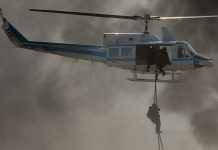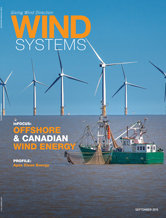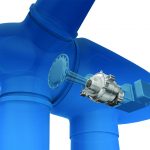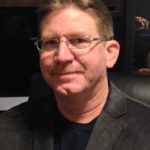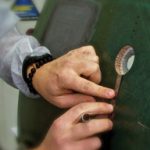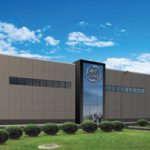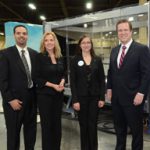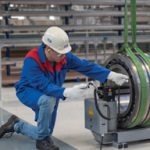The repair of wind-turbine generators involves transporting damaged components long distances to repair workshops. As the components are often large, this logistical effort results in enormous costs.
Siemens Service Wind Power has opted for a different solution: The leading manufacturer of wind-turbine generators has teamed up with temporary building manufacturer Herchenbach to develop a semi-permanent warehouse that will be used for repairs and maintenance at the turbine’s site.
Wind energy is one of the leading forms of renewable energy. And with good reason: Wind is an inexpensive and clean raw material with an endless supply. The investment costs of wind-turbine generators also pay for themselves quickly. But that only can happen if the generators run as smoothly as possible over their service life of 20 to 25 years. High maintenance costs, on the other hand, quickly lead to higher operational costs that translate into reduced revenues for turbine-generator operators.
“Wind-turbine generators must be a worthwhile investment, both from an ecological and an economic point of view,” said Mark Borkenhagen, project manager at Siemens Service Wind Power, the world’s leading manufacturer of wind-turbine generators. “Advancements in rotor-blade design and generator technology have already allowed us to continuously improve the efficiency of our wind-turbine generators. However, in order to make wind power competitive versus conventional forms of power generation, every cent that we can save in terms of maintenance is crucial.”
Minimizing Maintenance Costs
A key factor in this respect is the replacement and repair of individual components. Previously, when a repair became necessary, the damaged large parts of wind-turbine generators had to be transported to workshops as special heavy loads, in most cases involving long trips from wind-farm sites. Each heavy load had to be registered with the relevant local authority and was only allowed to be transported at night.
“The wind-turbine generators stand idle until the repaired parts are returned,” Borkenhagen said. “And each hour of downtime causes significant losses.”
So Siemens Service Wind Power started looking for an alternative. The answer seemed simple enough: install a temporary building for repairs on the actual wind-farm sites. A temporary and convenient repair site would help avoid the expensive and time-consuming transportation of heavy loads.
Siemens wanted to use the new semi-permanent warehouse solution in Europe, so it had to be possible to quickly install and dismantle the building, so it could travel from wind farm to wind farm as required. The warehouse also had to be able to withstand extreme wind loads and be big enough to house the — sometimes huge — turbine parts as well as the repair equipment.
“Wind-turbine generators have a diameter of over four meters, measure three meters in height and weigh (88 tons),” Borkenhagen said. “Such dimensions do not fit into any standard temporary building. What was required was a special solution.”
Siemens chose Herchenbach Industrie-Zeltebau GmbH, a manufacturer of temporary buildings and semi-permanent warehouses made from aluminum, to tackle this challenge. Other divisions of Siemens already had worked successfully with Herchenbach in the past. The result of this project was a special Herchenbach Heba-Fix® temporary building, 33 feet wide and 49 feet long with a side height of 21 feet.
Lowered Through the Roof
The main design challenge was the question of how to get the wind-turbine parts into the building since they wouldn’t fit through the sidewalls due to their massive size. Siemens Wind Power initially wanted to build the temporary warehouse around the generators for each repair.
“This would have been very time-consuming, thus unnecessarily prolonging the downtimes again,” Borkenhagen said. In addition, the complexity and vulnerability of assembling a building around such a large main component was a risk.
So Herchenbach developed a special temporary building solution. The basis is a corrosion-free, premium-quality aluminum frame and a combination of high-quality PVC industrial-grade tarpaulin in the roof as well as trapezoidal sheet metal and tarpaulin walls. This allows the roof to be partially opened up, so the parts needing repair can be lowered into the building through the roof opening with a crane.
This involves pulling a part of the roof tarpaulin out of the aluminum frame, a task performed manually by three-to-four employees fairly easily. However, the frame and the components had to be planned and designed with particular precision for this purpose.
“Even when the roof tarpaulin is temporarily removed, the structure has to remain stable in spite of high-wind loads,” said Tobias Raeber, managing director of Herchenbach. “We therefore incorporated robust steel trapezoidal sheet-metal walls and further reinforcements into the lateral middle sections of the temporary building at the point where the roof tarpaulin can be pulled out. These provide additional stability, making the building withstand high loads.”
Another advantage of the Herchenbach temporary buildings is they can be installed without any foundation on almost any surface. This is a crucial factor, particularly at wind farms, where simple compacted gravel surfaces or smaller asphalted parking areas are available. This is made possible by the building’s comparatively lightweight aluminum frame (in contrast to steel) and a special ground-anchoring solution. During installation of the structure, steel-base plates are fixed at regular intervals by driving nine earth pins up to 4.3 feet into the ground through each plate.
Europe-Wide Use
In addition, temporary buildings from Herchenbach are ideally suited for temporary use at different locations because of their modular design.
“All components are bolted or fitted together; nothing is permanently welded,” Raeber said. “This means that the buildings can be quickly dismantled at any time and put up again at other locations.”
And hardly any spare parts are needed, he said.
This approach already has proven itself in practice. The temporary building supplied to Siemens Service Wind Power was installed for the first time — within 24 hours — in fall 2015 in the Picardie region of northern France. After four repairs, it was uninstalled. The building was then put into storage until its next use in January in Tinglev, Denmark.
“Here, too, the installation went smoothly,” Borkenhagen said. The structure will remain in place in Denmark until it is needed at another location.
“We have therefore achieved our objective of rotating the new temporary building around the various wind farms in Europe,” Borkenhagen said. “And that really does work without too much time-consumption, and our costs are a fraction of what they were with the old method of transporting heavy loads.”


















